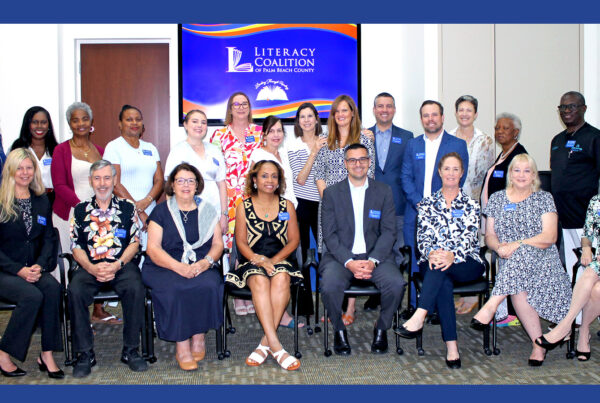Adult ESOL Teacher Strategies
Reading:
- Activate prior knowledge before reading.
- Provide opportunities for pre-reading activities such as brainstorming.
- Introduce key vocabulary before reading.
- Clarify word meanings through definitions, examples, restatements, context clues and/or visuals.
- Divide reading passages into segments to facilitate comprehension.
- Check comprehension regularly.
- Paraphrase and summarize to recall ideas.
- Scan for information to answer questions.
- Expose students to a variety of formats and styles (articles, graphs, tables, forms, maps, ads, poems, etc.)
- Encourage students to use picture or bilingual dictionaries.
Writing:
- Engage students in the writing process.
- Build writing skills. Begin with small written language units (words); lead students into longer units (phrases, sentences and paragraphs).
- Use topics familiar to your population.
- Practice writing for a purpose. (Absentee notes, messages, journal entries, etc.)
- Brainstorm and generate ideas about a topic using graphic organizers such as a web or semantic map.
- Teach students to draft, edit, revise and proofread work prior to turning in the final product.
- Provide opportunities to edit the draft with a partner using a checklist.
- Allow students to revise draft using feedback from checklist.
- Provide opportunities for students to share their writing with the class.
Speaking/Listening:
- Provide opportunities for students to listen to various types of recordings at appropriate ESOL level.
- Introduce key words before listening.
- Frame a question related to the listening topic to stimulate students’ interest and background knowledge.
- Link personal experiences to listening topic.
- Practice listening for specific information.
- Provide opportunities for oral retelling to monitor comprehension.
- Provide opportunities for oral presentations and pair-share.
- Accept small units of language as responses (words and phrases) initially and build towards the use of longer units (sentences).
- Use the simpler verb tenses, such as the simple present, simple past and future.
- Provide listening and speaking opportunities (conversations, interviews, discussions, role playing and skits) based on familiar contexts.
- Control vocabulary and grammatical structures used in listening/speaking activities.
Assessment:
- Practice standardized test formats (bubbling, multiple choice).
- Establish consistent classroom routines to facilitate progress.
- Allow students to respond to a percentage of given questions, depending on ESOL level.
- Vary the form of questions allowing for different levels of comprehension and participation.
- Give open-book tests.
- Provide word lists for support during assessment.
- Give extra time for task completion and/or provide alternative assessment when appropriate.
- Maintain academic and intellectual challenges for students at all levels.
More Tips:
- Plan cooperative activities in which advanced students can assist beginners.
- Set realistic goals and clear expectations with students.
- Individualize instruction when possible.





